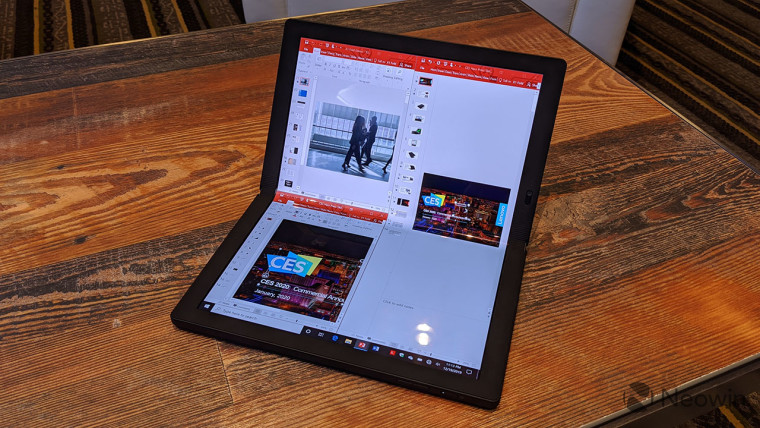
We've known about Intel's Lakefield processors for some time. After all, several products have already been announced using the new chips, such as Microsoft's Surface Neo, Lenovo's ThinkPad X1 Fold, and a new variant of Samsung's Galaxy Book S. Today, Intel finally detailed the new chips.
Lakefield directly competes with Qualcomm's Snapdragon processors, using big and little cores to manage power. In fact, Intel says that standby power can be as low as 2.5mW, a 91% reduction compared to its current lowest-power processors from the Y-series. There are five cores in total, and they're not Hyperthreaded. One of those is the big core, and the rest are little cores.
The chips are also smaller, which is what Intel says makes them ideal for dual-screen and foldable PCs. The package area is 56% smaller and the board size is 47% smaller when compared to a Core i7-8500Y. It has attached package-on-package memory, and native dual-display pipes.

The new CPUs come in Core i5 and Core i3 variants, specifically the Core i5-L16G7 and the Core i3-L13G4. Yes, the 'G' does indicate that they include Gen11 for 1.7x graphics performance over the UHD Graphics found in the Core i7-8500Y. This boost in graphics performance should make up for the fact that these aren't very powerful chips, with a 7W TDP and 0.8GHz and 1.4GHz clock speeds in the Core i3 and the Core i5, respectively.
| Processor Number | Graphics | Cores / Threads | Graphics (EUs) | Cache | TDP | Base Freq (GHz) | Max Single Core Turbo (GHz) | Max All Core Turbo (GHz) | Graphics Max Freq (GHz) | Memory |
|---|---|---|---|---|---|---|---|---|---|---|
| i5-L16G7 | Intel UHD Graphics | 5/5 | 64 | 4MB | 7W | 1.4 | 3.0 | 1.8 | Up to 0.5 | LPDDR4X-4267 |
| i3-L13G4 | 48 | 0.8 | 2.8 | 1.3 |
One of the issues here is that while Intel is introducing its processors for dual-screen and foldable devices, Microsoft's focus is elsewhere. In fact, Intel's press release didn't make a single mention of what was originally set to be the halo device for Lakefield, Microsoft's Surface Neo. Unfortunately, the Surface Neo, as well as all of Microsoft's dual-screen efforts are delayed.
Not only that, but Microsoft is repurposing its Windows 10X OS, which was originally for dual-screen PCs, for single-screen PCs. Rather than having Windows 10X and the Surface Neo coming this holiday season, the Redmond firm now says that it will introduce dual-screen PCs when it thinks the time is right.
The two PCs that Intel called out in its announcement were the Samsung Galaxy Book S and the Lenovo ThinkPad X1 Fold. Samsung's PC is a clamshell laptop, albeit impossibly thin and light by standards from just a couple of years ago. The ThinkPad X1 Fold has a foldable OLED display, and that's actually going to ship with Windows 10 Pro.
Intel says that the X1 Fold will ship this year, although Lenovo had announced it for the summer, and it said that the Galaxy Book S will arrive this month.

















5 Comments - Add comment